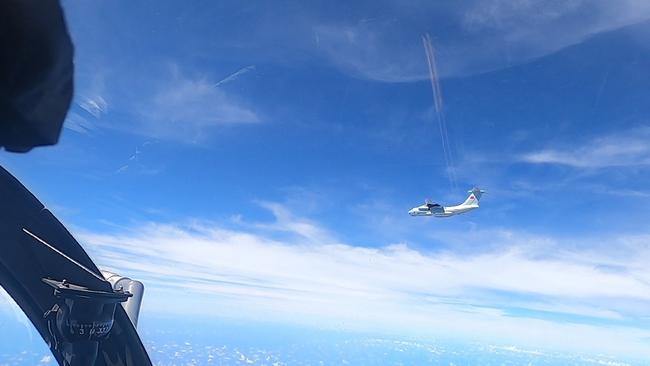Malaysian fighter jets scramble to meet Chinese ‘swarm’
Malaysia has angrily condemned a breach of its ‘airspace and sovereignty’ by 16 Chinese military aircraft.

Malaysia has angrily condemned a breach of its “airspace and sovereignty” by 16 Chinese military aircraft flying in formation over the Malaysian Maritime Zone in the South China Sea on Monday, and summoned its ambassador to lodge a formal protest.
The Royal Malaysian Air Force was forced to scramble Hawk 208 fighter jets after Chinese Airforce transport planes were detected 60 nautical miles off Malaysia’s Borneo coastline, and failed to respond to instructions to establish contact or turn back.
The People’s Liberation Aarmy Air Force planes, all Ilyushin 1l-76s and Xian Y-20s transports, did not enter Malaysian airspace but flew over its “maritime zone” — an area which extends much further from the coast — and near the contested Luconia Shoals over which both Malaysia and China claim sovereignty.
The RMAF said the “suspicious” incident posed a “serious threat to national sovereignty and flight safety”, given the planes were flying at about 23,000 feet in a busy commercial flight path between Kuala Lumpur and Kota Kinabalu. Malaysian forces have maintained a consistent presence at the Luconia Shoal for years and continued energy exploration in the area despite back channel efforts by Beijing to dissuade them.
Analysts say Monday’s unusual aerial “swarm” by China — the maritime equivalent of the recent swarms of Chinese fishing boats and coastguard vessels in Philippines waters — was almost certainly a political signal from Beijing to back off. Flight path information provided by the RMAF show the Chinese aircraft passed right near the Luconia Shoals, and also over the location of a stand-off last year between a Malaysian oil exploration vessel and Chinese survey ships.
Malaysian Foreign Minister Hishammuddin Hussein condemned China’s “intrusion”, saying his ministry would issue a diplomatic note to Beijing and summon its ambassador “to provide explanation regarding this breach of the Malaysian airspace and sovereignty”.
“In addition I will also relay Malaysia’s serious concern on the matter to my counterpart in China. Malaysia’s stand is clear – having friendly diplomatic relations with any countries does not mean that we will compromise our national security. Malaysia remains steadfast in defending our dignity and our sovereignty.”
A Chinese embassy spokesman said the flights were routine training and “did not enter the territorial airspace of any other country”. “According to relevant international law, Chinese military aircraft enjoy the freedom of overflight in the relevant airspace,” the spokesman said.
But Singapore-based maritime analyst Collin Koh said China’s latest incursion — as the two countries celebrated the 47th anniversary of diplomatic ties — was “predatory and opportunistic” and amounted to “blatant intimidation”.
“It’s very obvious this was not a mere training flight. The political signal is undeniable, which is why it is intimidating. Instead of just using maritime forces, they’re now using aerial assets to do the job,” he told The Australian. “This turnout of aircraft might not be unusual in the Taiwan Strait but it’s not something you see very often in Southeast Asia. This was very obviously intended to test Malaysia, not just politically but also to send a signal that your Airforce is underequipped and understrength.”
Despite their overlapping claims, relations between Malaysia and China are usually cordial. Relations between China and Philippines, however, have plummeted, with Manila lodging a protest last weekend over the “incessant deployment, prolonged presence, and illegal activities of Chinese maritime assets and fishing vessels” inside its exclusive economic zone.
The Philippines has responded to the recent intimidation tactics by increasing patrol boat deployments to disputed areas of the South China Sea, as has another South China Sea claimant Vietnam.
Vietnam Deputy Defence Minister Nguyen Chi Vinh said this week Hanoi was also building its presence inside its sovereign waters in response to China’s growing maritime aggression.
“China’s presence in the East Sea may be increasing, but do you see the red flag with yellow star is also present more and more densely, regularly and diversely in the East Sea?” he told VN Express.
“Our islands in the Spratlys are getting greener, more crowded, more bright all night like Vietnamese lighthouses in the far sea.”




To join the conversation, please log in. Don't have an account? Register
Join the conversation, you are commenting as Logout